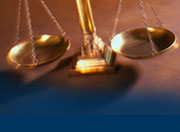  |
 |
|
Things every client should know about trademarksWhat legal rights does a trademark owner have?The trademark statute (i.e., the black-letter text of the Trademark Act, also known as the Lanham Act, appearing at Title 15 of the United States Code) contains several provisions which answer this question for different kinds of registered and unregistered marks. The following language from the statute, however, will give the reader a very good idea of the general nature of the rights conferred upon the trademark owner against an infringer: “Any person who, on or in connection with any goods or services,… uses in commerce any word, term, name, symbol, or device, or any combination thereof,… which… is likely to cause confusion, or to cause mistake, or to deceive as to the affiliation, connection, or association of such person with another person, or as to the origin, sponsorship, or approval of his or her goods, services, or commercial activities by another person… shall be liable in a civil action by any person who believes that he or she is or is likely to be damaged by such act.” Title 15, UNITED STATES CODE, § 1125(a)(1), Lanham Act § 43(a)(1) (emphasis added). Thus, the legal test is likelihood of confusion. That is, if Alpha Corp. is the first to adopt and establish use of and ownership of a particular trademark for a particular set of goods, and, at a later time, without permission, Beta Corp. adopts a trademark for its goods which is likely to cause confusion as to the affiliation, connection or association of the two companies, then Beta Corp. will risk being sued for trademark infringement. How do the courts determine whether there is a likelihood of confusion? In a nutshell, the courts will consider any factors that are relevant to the issue of whether there is a likelihood of confusion between the use of the first-comer’s mark (typically the Plaintiff’s mark in a trademark infringement lawsuit) and the use of the second-comer’s (typically, the Defendant’s) mark. However, although any relevant evidence will be considered, over time, a number of factors have come up, time and again, in the leading court decisions. Examples of those factors include:
Thus, if you engage a trademark attorney to advise you regarding whether one party’s trademark constitutes an infringement of another’s, a detailed review and analysis of factors similar to those listed above will very likely constitute an important component of the engagement. Our principal office is in Richardson, Texas. Our clients are nationwide. Law Office of Paul W. Fulbright, PLLC |
| Legal Services | About the Firm | Training & Seminars | FAQs | Intellectual Property Essentials | This Business of Innovation | Working with Attorneys | IP Legal News | Useful Links | Website Terms of Use | Contact the Firm | Home |
| Copyright 2007 Law Office of Paul W. Fulbright, PLLC. All rights
reserved. Registered patent attorney Paul W. Fulbright is responsible for the content appearing at this site. Principal office location: 2003 J J Pearce Drive / Richardson, Texas 75081 / 972-907-8679 / Email Us. |

